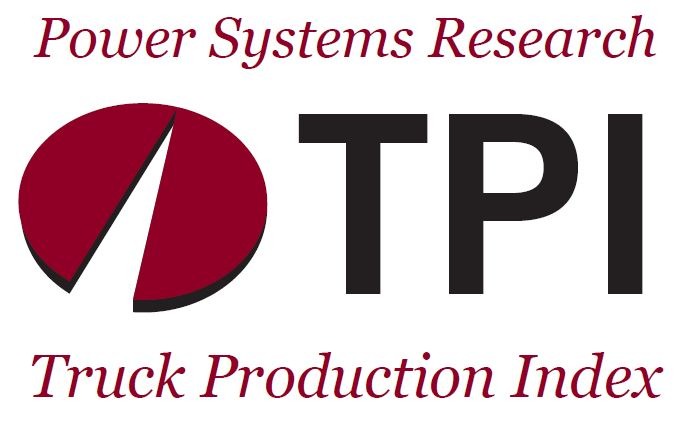ST. PAUL, MN — The Power Systems Research Truck Production Index (PSR-TPI) increased from 106 to 120, or 13.2%, for the three-month period ended June 30, 2019, from Q1 2019. The year-over-year (Q2 2018 to Q2 2019) loss for the PSR-TPI was, 122 to 120, or 1.6%.

Commercial truck demand in North America and portions of Eastern Europe is expected to be relatively strong for much of the year, at the same time most other regions are experiencing a slowdown. PSR expects a continued slowdown in medium and heavy truck demand for most regions in 2020.
The PSR-TPI measures truck production globally and across six regions: North America, China, Europe, South America, Japan & Korea and Emerging Markets. This data comes from CV Link™, the proprietary database maintained by Power Systems Research.
Global Index: Much like the global economy, medium and heavy truck demand is expected to slow this year and into 2020. Currently, a global recession is not forecasted but rather a cooling off is expected. According to IHS Markit, global GDP was 3.2% in 2018 and is forecasted to edge down to 2.9% in 2019 and 2.8% in 2020. These indicators align with what PSR is seeing in the global medium and heavy truck market.
North America: While demand for medium and heavy commercial trucks has been strong this year, order rates have started to decline more than expected and some 2019 build slots have opened in the class 8 segment. Class 8 demand has started to slow as freight rates
continue to deteriorate. It is believed that an overall slowing of the market along with concerns about a trade war is affecting demand.
Europe: Overall, sales and production for medium and heavy commercial trucks in Europe is expected to be flat this year compared with 2018. Production in Western Europe is expected to decline by 4% while production in Eastern Europe is expected to increase by 15.5% as the trucking companies continue to replace older vehicles.
South Asia: After very strong demand in the medium and heavy truck segment during the past few years, it appears the regional economies are cooling somewhat, and production is expected to decline by 14% this year over 2018. The decline is expected to be led by India with a drop of 16% this year. Truck overcapacity of 15% – 18%, along with an overall slowdown in the automotive segment, will contribute to this. The implementation of the BSVI emission regulations in April 2020, also will have a negative impact as the OEMs begin equipping trucks with the higher cost emission technology throughout the year.
South America: Medium and heavy truck production is expected to increase by 7% this year, driven by Brazilian production. Improved demand in both the domestic and export markets continues to drive sales. After several years of low demand as a result of relatively young fleets and a very poor economy, demand started to improve during the past few years as the truck companies needed to replace their older trucks.
Japan/Korea: Medium and heavy truck production is expected to decline by 2% this year as both the domestic and export economies slow. Some of the decline in exports may be attributed to uncertainty surrounding tariffs. Most of the production in Japan is for export, which provides for very diverse vehicle markets. Greater China: Medium and heavy truck demand is expected to decline this year primarily due to a slowing economy, relatively high truck capacity and higher truck prices partly due to the cost of emission technology and lower freight rates. It is unknown how much of an impact the trade tariffs play into this. Given the combination of a slowing economy and relatively high truck capacity, demand is expected to be soft during the next few years.
The next update of the Power Systems Research TPI will be in October 2019 and will reflect changes in the TPI during Q3 2019. PSR
Chris Fisher is the senior commercial vehicle analyst at Power Systems Research
Jim Downey is vice president -global data products at Power Systems Research


